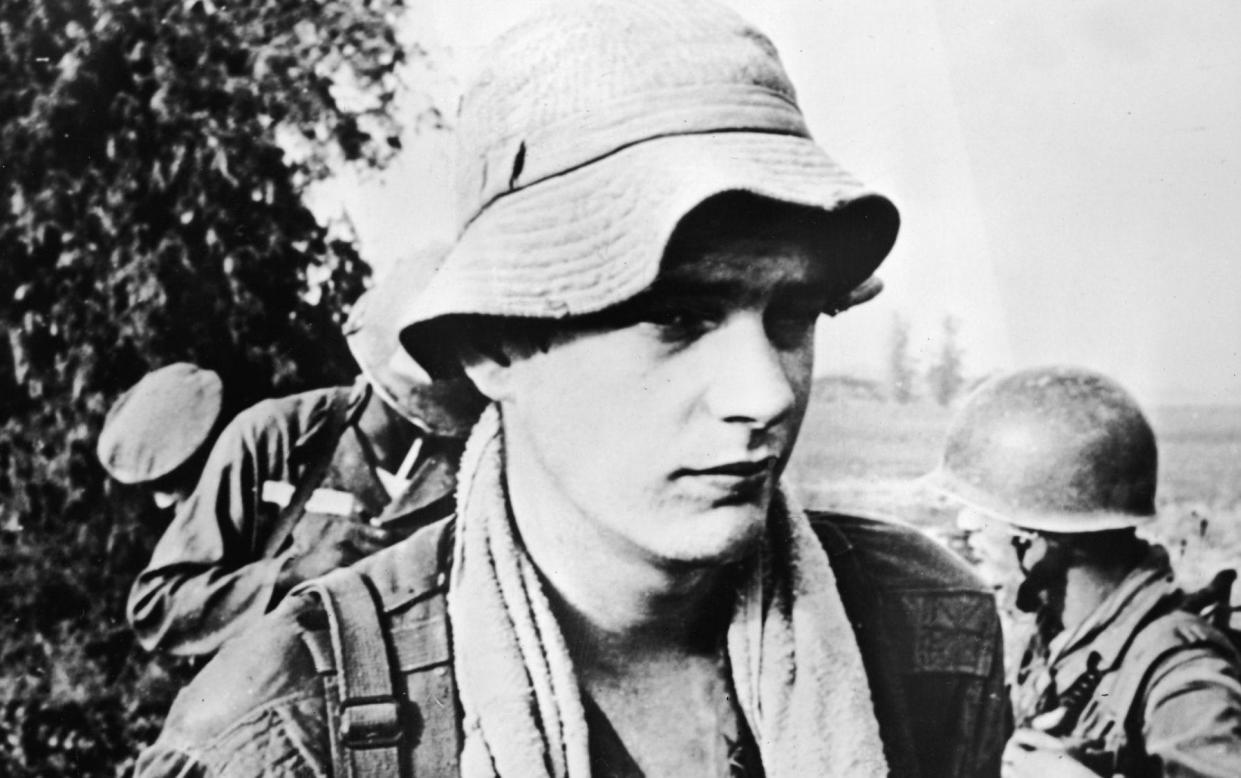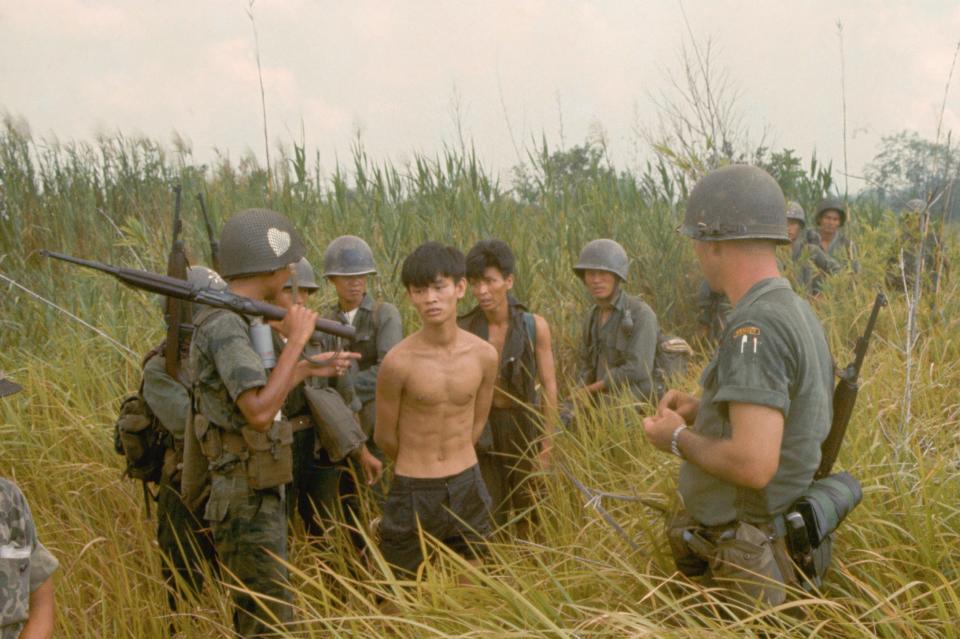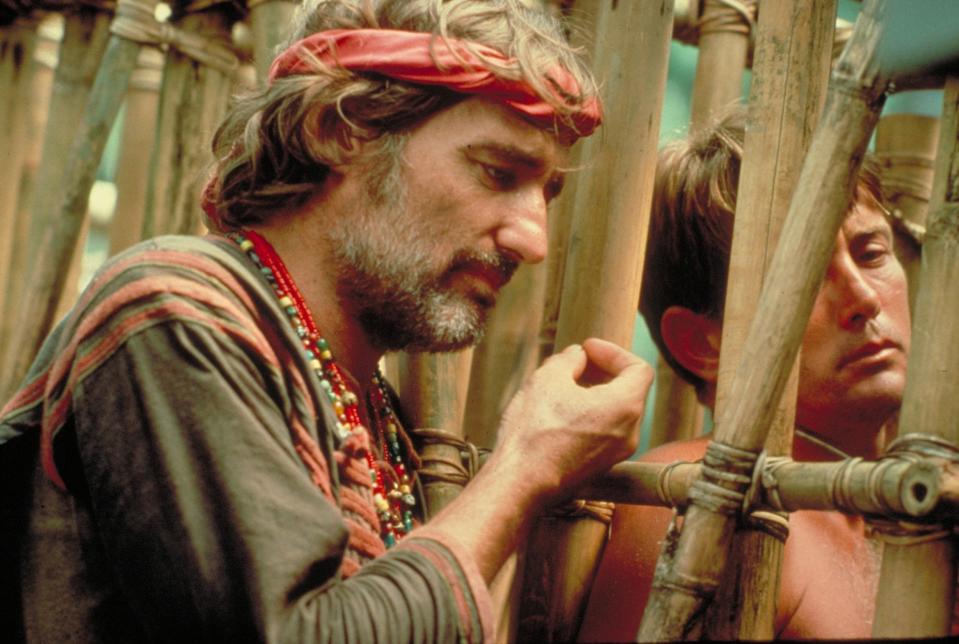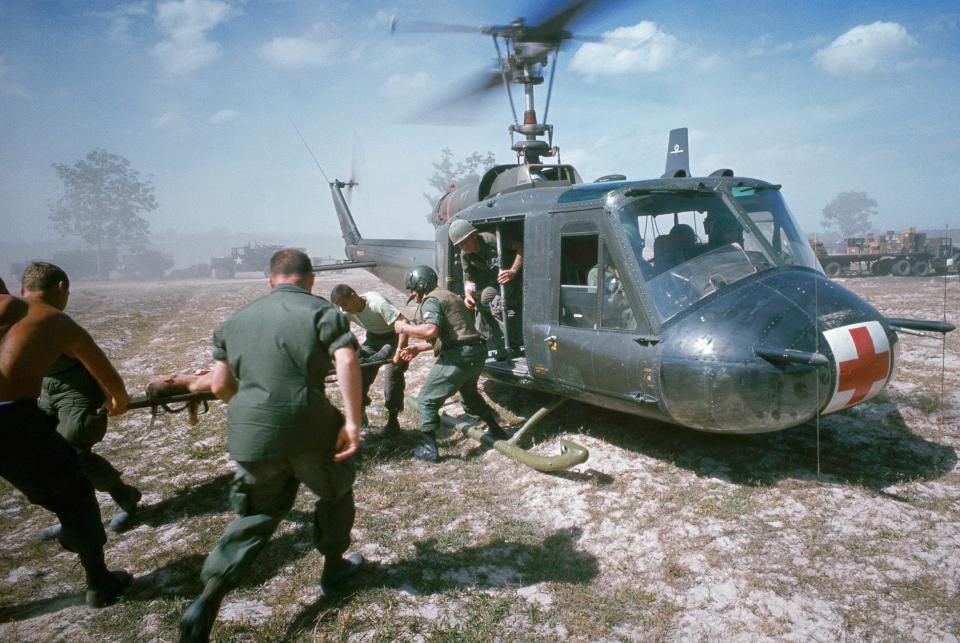Tim Page, hard-living Vietnam War photographer and model for Dennis Hopper’s snapper in Apocalypse Now – obituary

Tim Page, who has died aged 78, was a British-born photographer who made his name covering the war in Vietnam with powerful images which helped to turn opinion against America’s role in the conflict; he won widespread acclaim for his work and was caricatured as the wild-eyed dope-smoking snapper played by Dennis Hopper in Francis Ford Coppola’s Apocalypse Now.
Working for UPI and Life magazine, Page personified the war photographer as freebooting mercenary: hard-living, almost suicidally fearless, and dispassionate in the face of horror and barbarity. Dope-eyed and drawly, he would cadge rides around Vietnam in US military helicopters, vividly capturing the conditions under which soldiers and Vietnamese civilians lived, fought and died.

When Michael Herr, author of the Vietnam war book Dispatches and one of the screenwriters on Apocalypse Now, first met Page in the 1960s, he recalled a “wigged-out crazy” who played the Mothers of Invention at full volume, inscribed his helmet with a lyric from Frank Zappa, adorned his field gear with “freak paraphernalia, scarves and beads”, and regularly put himself in the line of fire.
Before the war was over, Page was hit four times. On the last occasion, the shrapnel went straight through his head, and surgeons removed tissue the size of an orange from his brain.
Timothy John Page was born on May 25 1944 at Tunbridge Wells, Kent and brought up in Orpington, where he dreamed of becoming a fighter pilot. At the age of six, he discovered that he was adopted; he knew nothing about his birth mother, but found out that his biological father had died in a torpedo attack on an Arctic convoy during the Second World War.

Tim was an accident-prone child. Aged two he was hospitalised with third-degree burns that later prevented hairs from growing on parts of his chest. At 16, a motorbike accident left him so smashed up that he was pronounced dead on arrival at hospital. His left hand and pelvis were crushed and he was left with a permanent limp.
A year after the accident, he took his Pentax camera and ran away from home, leaving a note for his parents which read: “Dear Parents, Am leaving home for Europe and perhaps navy and hence the world. Do not contact authorities as I shall write periodically... PS: Pay postage on parcels and cancel driving test.”
In 1963 he wound up in Laos, and made his name smuggling out exclusive pictures of the civil war between the US-backed Royal Laotian government and the Soviet-backed Pathet Lao. In 1965, aged 21, he was sent to Saigon by UPI to cover the border conflicts in Cambodia and Vietnam.

Page spent three and a half years based in Saigon, sharing a flat with Sean Flynn, son of Errol and equally swashbuckling, who had been sent to Vietnam as a photographer by Paris Match. Together they risked their lives by day and partied by night.
Reviewing Page’s account of this period in his memoir Page by Page (1989), Mick Brown found that at times it read “alternately like a pharmacist’s shopping list (opium, uppers, acid, cocaine, grass by the kilo) and a medical textbook – shrapnel wounds, car crashes, hepatitis, the runs, testicular elephantiasis and almost every sexually transmitted disease known to man.”
Page took shrapnel in the legs and stomach in 1965 and the next year he was wounded in the head, back and arms by explosives during Buddhist riots in Da Nang. “The upper part of my face felt shredded and wet, there was no vision, the left hand felt as though it had been dunked in acid,” he recalled. “All around, the din of battle had resumed over the cries of my buddies and the panicking Vietnamese”.

Sean Flynn managed to summon help and Page was rushed in a press corps Jeep to an airforce-base hospital, “where a chunk of grenade was dislodged from my nose, a spiral coil from my temple, and four more bits from lower down”.
On a third occasion Page was blown out of the China Sea by friendly fire while on a patrol boat and left floating in the water with some 200 different wounds. He was one of just three survivors of the incident.
After that he left Vietnam for a time, though he remained as busy and wild as ever. He covered the Arab-Israeli Six-Day War in 1967 and later the same year was arrested in the US with the Doors singer Jim Morrison when Morrison was charged with inciting a riot at a gig and with indecency and public obscenity.
By 1968, however, Page was back in Vietnam in time for the second Tet offensive. He nearly did not leave. In 1969, as he leapt from a helicopter collecting wounded GIs from the battlefield, a sergeant stepped on a mine, sending a large piece of shrapnel into Page’s brain.

On the helicopter taking him to a medical post, he was declared dead and his heart had to be revived three times. The medics then had to open his skull and scoop out a large chunk of brain and he spent the next year in California undergoing neurosurgery. “Later in New York I used to sit and scratch off my own blood and brains from the interstices of the Leicas; though they never looked really clean again,’’ he recalled.
For a while, Page was paralysed on the right side of his face and body. But, as he recalled in a later interview, “A very good old friend of mine ... saw me just after I’d had surgery and his definition of recovery was, ‘Page, you’re gonna be OK when you can roll a joint, ride a bike, and f--- on top’. I guess I learned to roll a joint within about six months.”
But his days as a frontline war photographer in Vietnam were over. He was still in his early twenties.

He worked as a freelance photographer from the late 1960s for music magazines including Rolling Stone and later covered conflicts in Afghanistan, the Solomon Islands, Israel, Bosnia and East Timor. However, he spent much of the rest of his life commemorating photographers on both sides of the conflict in Indochina, many of whom lost their lives.
These included his great friend Sean Flynn, who had disappeared in 1970 with another reporter, Dana Stone, after setting off by motorbike to eastern Cambodia.
Page spent many years trying to solve the mystery of what happened to them, discovering, on a 1991 trip to Cambodia to make a documentary, that they had been captured by the Vietcong and later handed over to the Khmer Rouge. They had ended up in a PoW camp, where they were executed. Page returned home with their teeth.
Page founded the Indochina Media Memorial Foundation, which sells prints by photographers who covered the conflict in Indochina, to raise money to train young Vietnamese photographers. With the AP photographer Horst Faas, he put together Requiem, a book made up of work by 135 correspondents who disappeared or lost their lives in Vietnam.
Some things never changed. In May 1993 he was in Cambodia for the UN-sponsored general elections when, the night before the polls opened, a party was held to mark his birthday, its main feature being, according to press reports, “a large pot of soup containing enough marijuana to fell a herd of oxen”. The brew was so potent that several journalists spent most of the day of the election in bed.
Page published some dozen books, beginning with Tim Page’s NAM (1983), with a foreword by William Shawcross. In 2001 he published The Mindful Moment weaving together 30 years’ worth of images ranging from the horrors of war to the blissful peace of Buddhist shrines, Confucian funerals and unspoilt landscape. These were interrupted by long reflective passages which conveyed an interest in spiritual matters that seems to have helped assuage some of the horrors Page had experienced.
Page moved back to England in 1979, but later settled in Australia, where he became an adjunct professor of photojournalism at Griffith University, Queensland.
He is survived by his Australian partner Marianne Harris and by a son from a previous relationship.
Tim Page, born May 25 1944, died August 24 2022

 Yahoo News
Yahoo News 
